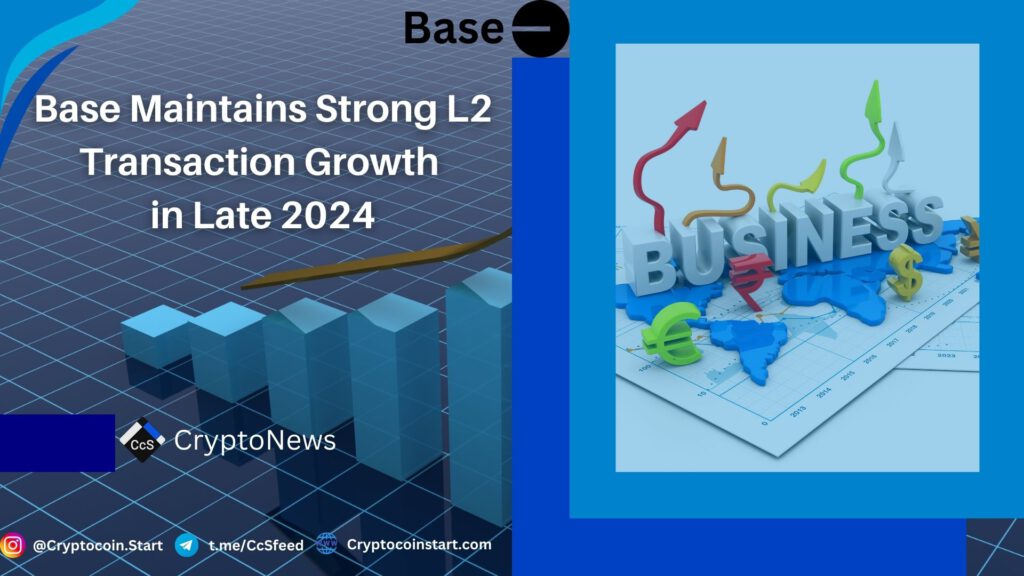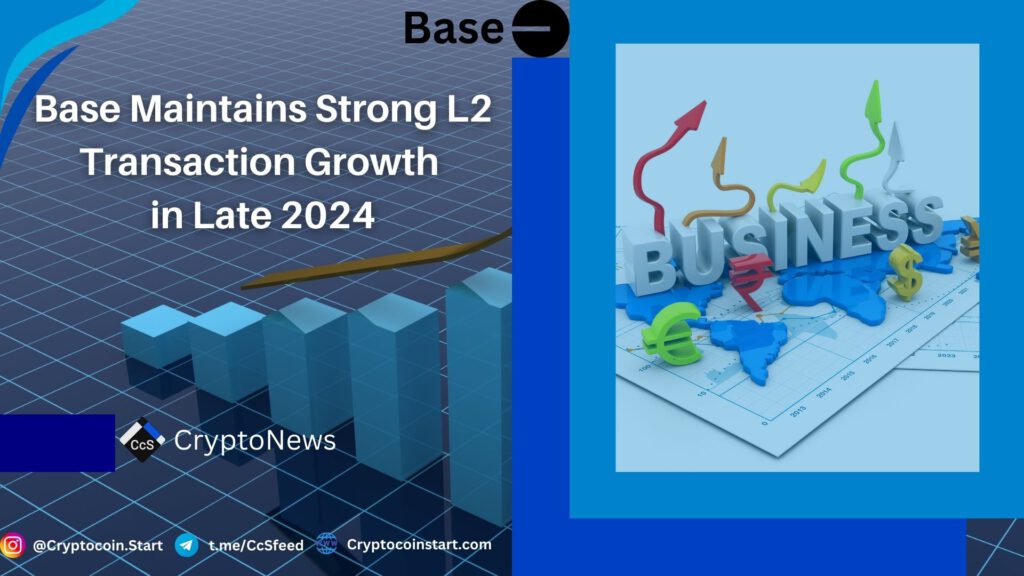
Base Leads L2 Chains in 2024, With Strong Growth and Adoption
In 2024, Layer 2 (L2) chains have seen significant growth, with several key players emerging. Base, in particular, has retained strong transaction momentum throughout the year, surpassing other networks in terms of daily transactions and tokenized transfers.
Base’s Continued Growth and Transaction Dominance
Base, a tokenless chain by Coinbase, has maintained its growth momentum throughout 2024, reaching more than 8 million transactions per day. This makes it a leader in both raw transaction numbers and the complexity of tokenized transfers. Base’s dominance in L2 chains has been complemented by the growth of Arbitrum and Optimism.
While the general hype around L2s has slowed, their infrastructure remains one of the most widely used Web3 features. Base reached a peak of 8.8 million daily transactions, far surpassing other top L2s, which together total 5.5 million transactions per day. As we look toward 2025, it’s clear that apps will continue to drive adoption and activity within the L2 ecosystem.
Shifting Priorities and the End of Airdrop Farming
The expansion of L2 chains in late 2024 saw a shift in priorities, marking the end of the earlier focus on airdrop farming. This shift aligns with expectations for 2025, where app-driven growth will be the main factor in L2 adoption.
The landscape for L2 chains has evolved, with Base displacing Polygon in several categories. Polygon, which once saw most of its activity driven by Polymarket bets, has lost some of its momentum as projects have chosen other networks for launching apps and tokens.
L2 Chains Absorb Value and Ethereum Remains Key
L2 chains are continuing to absorb value, with over $58 billion locked in L2 protocols, mostly within optimistic rollups. As of the end of 2024, Ethereum still holds $68.42 billion in value locked, primarily through services like LidoDAO and Aave.
Despite the growth of L2 chains, Ethereum remains essential for stablecoin activity, retaining its position as the largest network for stablecoin transactions. The transition to L2s has not hindered Ethereum’s role as the primary platform for stablecoin use.
Distinct App Profiles and Activities Across L2 Chains
Each L2 chain has carved out its niche, with specific app profiles and activities contributing to their success:
- Arbitrum and Optimism: These chains have become hubs for DeFi and decentralized exchange (DEX) trading.
- Base: Known for high-liquidity trading, Base has seen increased activity from the newly issued wrapped Bitcoin (cbBTC) and AI-driven protocols.
- Taiko: Taiko’s busiest smart contract, WETH9, powers DeFi activity with a wrapped version of Ethereum.
In particular, Base’s leading contract is a miner extractable value (MEV) strategy executor, with Uniswap V3 being the contract with the highest transaction count. Recently, Uniswap on Base achieved a record in monthly trading volume.
L2 Chains Contribute to Ethereum’s Burn Mechanism
One of the notable impacts of L2 chains is their contribution to Ethereum’s burn mechanism. As of December 27, L2 blob fees were the third-largest source of ETH burns, helping to curb inflation. While Ethereum remains slightly inflationary, with an annualized inflation rate of 0.5%, L2 chains have successfully scaled Ethereum tasks and supported high-speed activity.
Taiko, in particular, has been a significant contributor to payments on Ethereum, as it does not slow down its transaction posting to the Ethereum network. This balance between Ethereum’s Layer 1 and Layer 2 participants has resulted in both sides earning fees, creating a symbiotic relationship between the two layers.
Ethereum Retains Its Role as the Leading Platform for Stablecoins
Ethereum continues to dominate stablecoin activity, with the ERC-20 version of USDT being the most widely traded and transacted stablecoin. While L2 chains have absorbed some of the transaction volume, particularly in meme token activity, they have yet to capture a significant share of stablecoin liquidity.
L2 chains continue to use wrapped versions of ETH as collateral, and their ecosystems are expanding as they host a growing number of decentralized applications (dApps).


